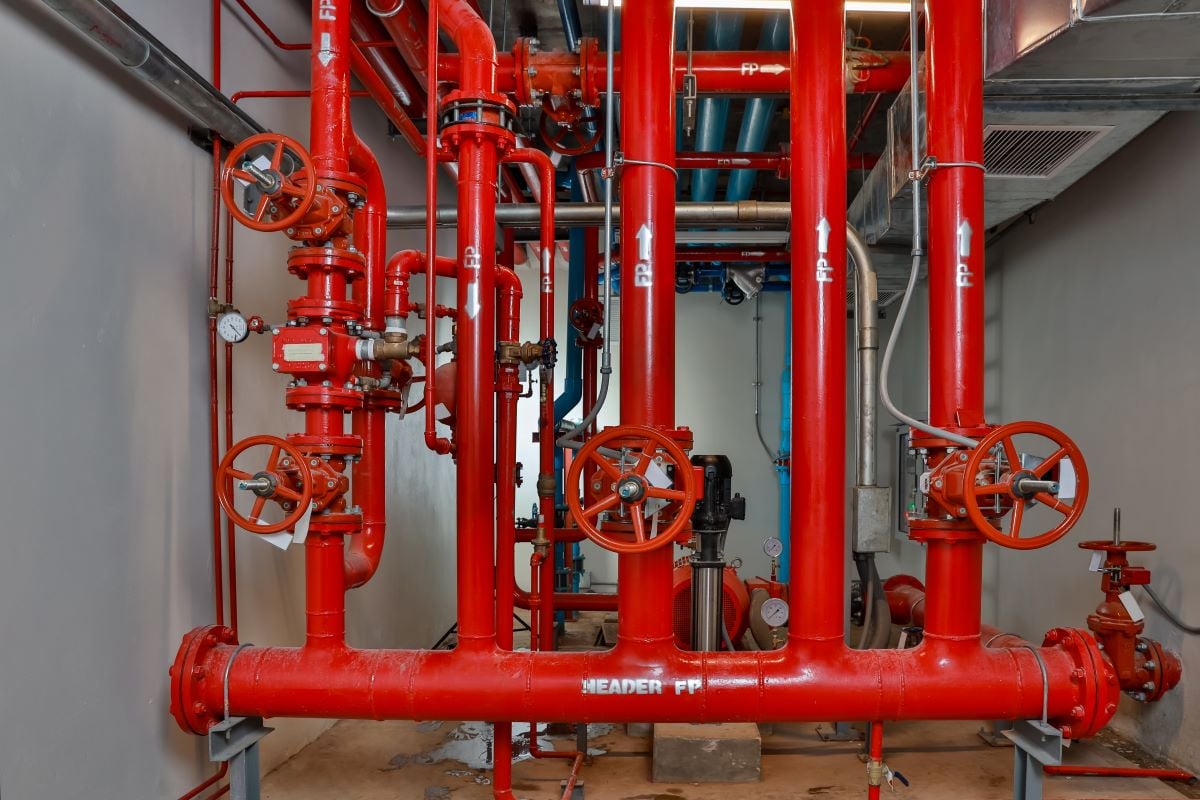
NFPA 14, Standard for the Installation of Standpipe and Hose Systems, is a document published by the National Fire Protection Association (NFPA) that outlines the requirements for the design, installation, and maintenance of standpipe and hose systems in buildings. These systems are used to provide a means of fighting fires in large commercial and industrial facilities, such as office buildings, factories, and warehouses.
The standard is divided into several sections, each addressing a specific aspect of standpipe and hose system design and installation. The first section provides general information about the standard and its scope, including definitions of key terms used throughout the document. The second section covers the design and installation of standpipe systems, including the type and size of piping, fittings, and required valves. The third section addresses hose systems, including the type and size of hose, nozzles, and other necessary components. The fourth section covers the testing and maintenance of standpipe and hose systems, including the frequency and procedures for inspecting, testing, and maintaining the systems.
Standpipe and hose systems are critical components of fire protection in commercial and industrial facilities. They provide a means for firefighters to quickly and effectively extinguish fires, which can help to minimize damage and protect lives and property. The NFPA 14 standard is a widely recognized and accepted standard, and it is often used as the basis for local and state codes and regulations. Therefore, business facilities must have all their standpipe and hose systems in compliance with NFPA 14 in order to be considered compliant and safe for their employees and visitors.
Contact Koorsen Fire & Security
If you have any questions about the NFPA 14 standard or other fire protection codes and regulations, please don't hesitate to contact Koorsen Fire & Security. Our team of experts is here to help you ensure that your facility is in compliance with all relevant codes and regulations; and that your standpipe and hose systems are properly designed, installed, and maintained to protect your employees, visitors and property.
NFPA 14 FAQs
What is a standpipe system?
A standpipe system is a type of fire suppression system installed in buildings to provide a means of directing water to upper levels of the building in the event of a fire. The system consists of pipes that run from the ground floor to the upper floors of the building and are connected to a water supply. In addition, hose connections are provided at various locations throughout the building to allow firefighters to access the water supply and extinguish fires.
What types of buildings are required to have a standpipe system?
According to NFPA 14, standpipe systems are required in buildings that are more than four stories in height or have an occupancy that requires an additional level of protection, such as assembly occupancies, high-rise buildings, and buildings with hazardous occupancies.
What are the different types of standpipe systems?
There are two main types of standpipe systems: wet standpipe systems and dry standpipe systems. Wet standpipe systems are filled with water at all times and are pressurized by the fire department's pump when in use. Dry standpipe systems are not filled with water and must be charged with water by the fire department before use.
What is the difference between a standpipe system and a sprinkler system?
A standpipe system is a type of fire suppression system that is designed to provide a means of directing water to the upper levels of a building. On the other hand, a sprinkler system is a fire suppression system designed to automatically extinguish fires by releasing water from sprinkler heads throughout the building. Standpipe systems are typically required in buildings that are more than four stories in height or that have an occupancy that requires an additional level of protection, while sprinkler systems are typically required in all types of buildings.
What are the requirements for hose connections in a standpipe system?
NFPA 14 requires that hose connections be provided at various building locations, including exits and stairwells. In addition, hose connections must be of a type and size that is compatible with the hose used by the fire department and must be located in a location that is easily accessible to firefighters.
What are the maintenance and inspection requirements for standpipe systems?
NFPA 14 requires that standpipe systems be inspected and tested on a regular basis to ensure they are functioning properly. The standard also requires that standpipe systems be maintained in accordance with the manufacturer's recommendations, and any defects or damage must be repaired immediately.


